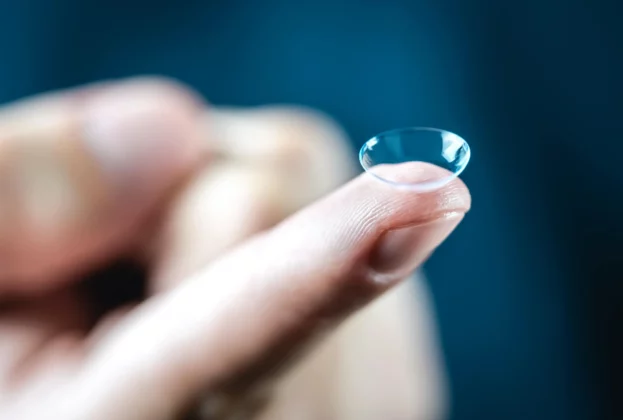
Gone are the days when cataracts spelled the end of clear vision. Welcome to the age of multifocal lenses—a game changer in cataract treatment. If the terms “bifocal,” “trifocal,” and “multifocal” sound like jargon right now, don’t fret. By the end of this guide, they’ll be as familiar to you as your morning coffee ritual. Dive in as we demystify multifocal lenses for cataracts, compare the pros and cons, and even break down the costs for you. Ready for a clearer perspective? Let’s jump in!
Contents
In the vast landscape of eye care, multifocal lenses emerge as a beacon of innovation. But what exactly are they, and how do they transform our vision?
At their core, multifocal lenses are advanced intraocular lenses (IOLs) designed to improve vision at multiple distances. Think of them as the all-rounders of the lens world. While traditional lenses, or monofocal lenses, are tailored to improve vision at a single distance (either near or far), multifocal lenses go the extra mile. They’re structured to let you see clearly up close, at arm’s length, and afar, all without the constant shuffle of switching between different pairs of glasses.
Bifocal Lenses:
Trifocal Lenses:
So, Which One is Better? The choice between bifocal and trifocal largely depends on individual needs. If you often find yourself working on a computer or doing tasks that require an intermediate range of vision, trifocals might be your best bet. On the other hand, if your primary concern is transitioning between near and far tasks, bifocals could be the ideal choice.
Opting for multifocal lenses after a cataract surgery is akin to upgrading your viewing experience on a high-definition screen. From offering versatile vision capabilities to enhancing convenience, these lenses bring a multitude of benefits to the table. Let’s delve into the specifics:
Multifocal lenses are designed to cater to a spectrum of vision needs. Whether you’re reading a book, working on a computer, or gazing at distant horizons, these lenses ensure clarity across varied distances, making them a practical choice for everyday activities.
With multifocal lenses, the perpetual dance of switching between different pairs of glasses for different tasks becomes history. They eliminate the need for multiple spectacles, offering you a glasses-free experience, or at the very least, considerably reducing your dependency on them.
While the initial investment might seem significant, in the long term, multifocal lenses can be cost-effective. Consider the expenses saved on multiple pairs of glasses or frequent prescription updates, and the scales tip in favor of multifocals.
Whether you’re an avid reader, a sports enthusiast, or someone who enjoys the simple pleasures of life, multifocal lenses support a more active and uninhibited lifestyle. The seamless transition between vision ranges means fewer interruptions in your daily activities.
Unlike some other lens types, certain multifocal lenses are designed to reduce halos and glare, enhancing your night-time visual experience – a boon for night-time readers and drivers.
With multifocal lenses, the post-surgery care regimen often becomes simpler, as the need for constant adjustments to different glasses is eliminated. This leads to a more hassle-free recovery period.
In summary, while the choice of lens post-cataract surgery is deeply personal, the multifaceted benefits of multifocal lenses make them a compelling option for many, promising a vibrant and clear visual future.
While multifocal lenses offer numerous advantages, it’s essential to be aware of potential challenges and side effects. Here’s a concise overview:
Being informed about these potential challenges ensures that users can make well-rounded decisions and set realistic expectations when opting for multifocal lenses.
Choosing the right lens for your eyes is a significant decision, both for your vision and your wallet. Let’s break down the costs associated with multifocal lenses:
In essence, while multifocal lenses represent a significant investment, their myriad benefits, combined with the potential for a glasses-free life, can make them a worthwhile consideration for many.
Navigating the world of cataract solutions can feel overwhelming, especially with the myriad of lens options available. Multifocal lenses, with their promise of clearer vision across distances and reduced dependency on glasses, present a compelling choice for many. As with any medical decision, being well-informed is crucial. We hope this guide has shed light on the multifaceted world of multifocal lenses for cataracts.
Are you experiencing cataract-related problems? There’s no need to let blurred vision cloud your daily life. Experience clearer, brighter days ahead. Cataract Surgery at EyeMantra can help. Don’t wait; prioritize your vision and embrace a clearer future. Book your free appointment now at 9711116605.
How long does the cataract surgery with multifocal lens implantation take?
Typically, the surgery takes about 20-30 minutes per eye. However, preparation and recovery time means you should plan for a few hours at the medical facility.
Will I be completely free from glasses after the surgery?
Many patients experience significantly reduced dependence on glasses for most activities. However, for specific tasks like reading very fine print, you might still need reading glasses.
How soon can I return to normal activities post-surgery?
Most patients can resume their regular activities within a few days. However, it’s best to avoid strenuous activities and protect your eyes from dust and debris for a couple of weeks.
How long do multifocal lenses last?
The beauty of multifocal lens implants is that they’re designed to last a lifetime. Unlike natural lenses, they don’t degrade or cloud over time.
Is the surgery painful?
Cataract surgery with multifocal lens implantation is usually painless. Anesthesia is administered to ensure comfort during the procedure, and post-operative discomfort is generally minimal.